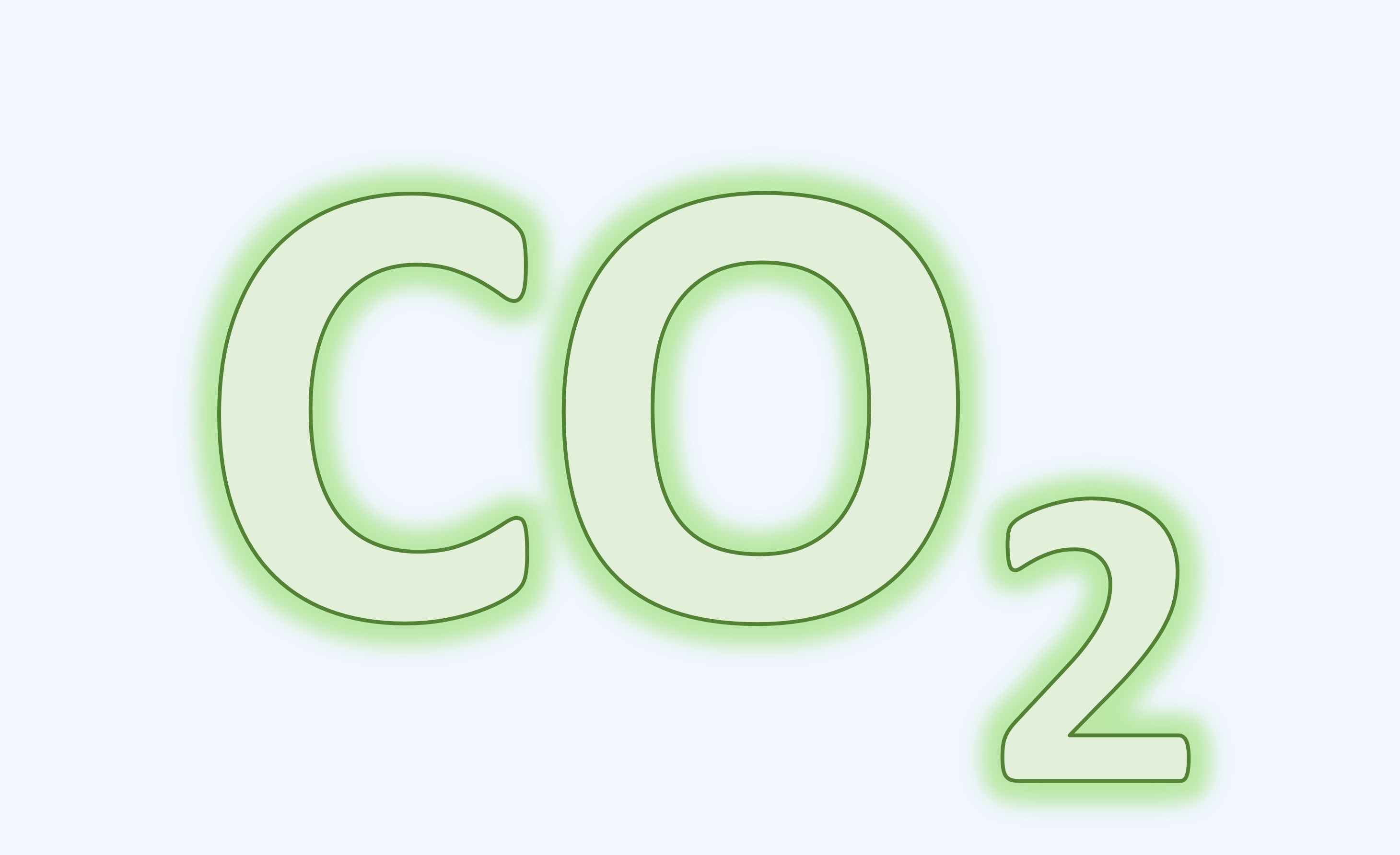Volcanoes.
Not the answer you expected?
Not sure why it matters? Then please read on.
We live in a time when scientific truths are regularly challenged with “alternative facts” and our best weapon against them is knowledge. This is why I am sharing a series of posts on “climate basics”. This one is about the carbon cycle and why it matters.
Maybe your first thought, when I asked where carbon dioxide comes from, was “from humans”. This makes sense. We add carbon dioxide to the atmosphere naturally when we exhale (breath out). But this is carbon dioxide that we have “borrowed” from the atmosphere. The carbon dioxide we add to the atmosphere when we exhale was taken from the atmosphere by photosynthesis. We don’t photosynthesise, but the plants we eat do (and the animals we eat, ate plants). The same is true for the carbon dioxide we add to the atmosphere when our bodies decay after we die. It too is “borrowed”. Because we give back the same amount of carbon dioxide to the atmosphere that we take from the atmosphere, we do not affect the total amount of carbon dioxide in the atmosphere by living (and dying).
On the other hand, humans also add a lot of carbon dioxide to the atmosphere artificially by burning fossil fuels, making cement and changing how the land is used.
But humans have not always been here. Humans have only been here for the most recent 0.007% of Earth’s 4.6-billion-year long history. And the atmosphere has contained carbon dioxide for more or less all of those 4.6 billion years, so carbon dioxide cannot ultimately come from humans.
Maybe your first thought was “plants and animals”. This also makes sense. Like humans, plants and animals add carbon dioxide to the atmosphere naturally by respiration, or when their bodies decay after they die. But this carbon dioxide has also been “borrowed” from the atmosphere. The carbon dioxide plants and animals add to the atmosphere by respiration, or when their bodies decay after they die, was taken from the atmosphere by photosynthesis. Because plants and animals give back the same amount of carbon dioxide to the atmosphere that they take from the atmosphere, plants and animals do not affect the total amount of carbon dioxide in the atmosphere by living (and dying).
Let’s dig deeper …
Plants (and animals) are part of the fast carbon cycle (we call it “fast” because there’s also a slow carbon cycle, which I’ll tell you about later on). It works like this:
Carbon (C) is:
- taken from the atmosphere by plants when they photosynthesise,
- stored for a while as carbohydrates in living plants (or animals that eat the plants),
- given back to the atmosphere by plants (or animals) when they respire and decay,
- stored for a while as carbon dioxide (CO2) in the atmosphere,
- and so on …
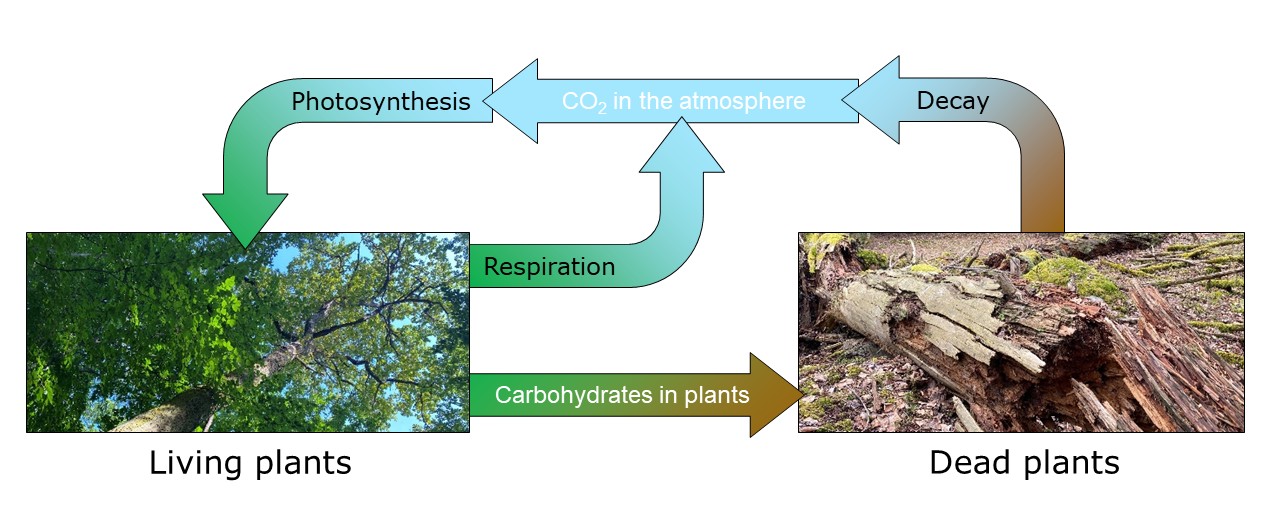
The fast carbon cycle works because carbon dioxide is taken from the atmosphere (by photosynthesis) _at the same speed _as it is given back to the atmosphere (by respiration and decay).
|
If (and only if) you enjoy chemistry, we can dig even deeper … Photosynthesis works like this:
Respiration is the “opposite” of photosynthesis. It works like this:
|
Let’s get back to where carbon dioxide comes from …
Like humans, plants and (other) animals have not always been here. Plants and animals have only lived on land for one tenth of Earth’s history, so carbon dioxide cannot ultimately come from plants and animals.
Carbon dioxide ultimately comes from volcanoes.
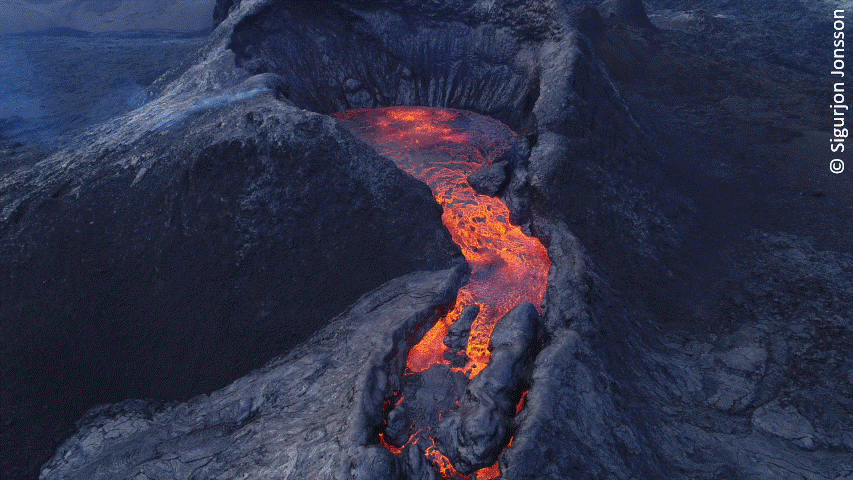
Unlike humans, plants and (other) animals, volcanoes have always been here. Volcanoes have been here for Earth’s entire 4.6-billion-year long history. And throughout all of that time, volcanoes have been adding carbon dioxide to the atmosphere. Volcanoes add several hundred million tons of carbon dioxide to the atmosphere every year.
This might seem like a lot.
However, by burning fossil fuels and making cement, we add carbon dioxide to the atmosphere 94 times faster than volcanoes do, and by changing the way the land is used, we add carbon dioxide to the atmosphere 16 times faster than volcanoes do. In total, we add carbon dioxide to the atmosphere 110 times faster than volcanoes. This equates to a “grand total” of 40 billion tons of carbon dioxide added to the atmosphere by humans every year.
That aside, the much smaller amount of carbon dioxide added to the atmosphere every year by volcanoes is still a lot.
If we crunch some numbers and make a few simplifying assumptions, we find that, since the birth of the Earth, volcanoes have added more than a quintillion (1 000 000 000 000 000 000) tons of carbon dioxide to the atmosphere, which (I think we can agree) really is a lot. Indeed, volcanoes have added nearly one million times more carbon dioxide to the atmosphere than we actually find in the atmosphere.
So, if it’s not in the atmosphere, where did all that carbon dioxide end up?
The answer is that it didn’t end up anywhere. The carbon dioxide that is in the atmosphere has been taken from the atmosphere and give back again (by volcanoes) nearly one million times.
So, what took (and takes) carbon dioxide away from the atmosphere?
To answer this question, we need to explore the slow carbon cycle, which volcanoes are a part of.
The slow carbon cycle is both similar to and different from the fast carbon cycle – and strange as it might seem, everyone needs to know about it, for the simple (and alarming) reason that we are perturbing it (and perturbing it is a very bad idea).
So, to find out how the slow carbon cycle works, let’s dive inside a volcano (which is another bad idea). If we do so, we would find ourselves swimming around in a magma chamber (which is yet another bad idea). If we somehow survived (which we wouldn’t), we would find the odd chunk of a rock called limestone floating around in there with us – magma chambers tend to “eat up” the rocks that surround them, and some of those rocks are limestones. Exactly the same thing happens to a chunk of limestone floating around in a magma chamber as would happen to it if it were thrown into a lime kiln. Carbon dioxide is “burnt off” and lumps of calcium oxide (lime) are left behind. The “burnt off” carbon dioxide mixes with magma and escapes to the atmosphere when the magma is erupted from a volcano.
So, carbon dioxide added to the atmosphere by volcanoes comes from limestone. But, where does limestone get it from?
Limestone is made of seashells and seashells make their shells out of calcium and carbon dioxide, both of which are found dissolved in seawater.
So, carbon dioxide in limestone comes from seawater. But, where does seawater get it from?
Carbon dioxide is carried by rivers from the mountains to the sea.
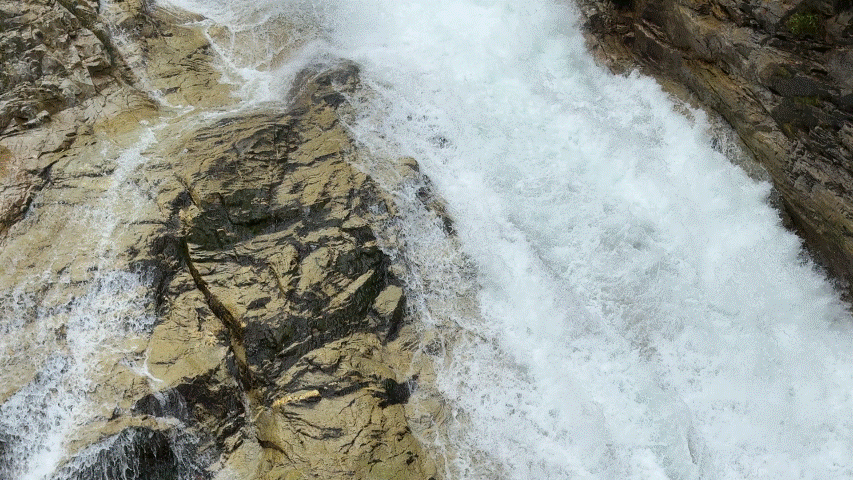
In the mountains, carbon dioxide from the atmosphere ends up dissolved in river water as a side effect of rock weathering – rocks are “attacked” by an acidic mixture of carbon dioxide and rainwater, which breaks them down to clay. The carbon dioxide remains dissolved and is carried by rivers to the sea.
Rock weathering takes carbon dioxide away from the atmosphere.
And, carbon dioxide in the atmosphere comes from volcanoes – and that’s us gone full circle. We have circumnavigated the slow carbon cycle (backwards).
Let’s dig deeper …
The slow carbon cycle works like this:
Carbon (C) is:
- taken from the atmosphere as a side effect of rock weathering,
- stored for a while in seawater and then limestone,
- “burnt off” in a magma chamber, and given back to the atmosphere by volcanoes,
- stored for a while as carbon dioxide (CO2) in the atmosphere,
- and so on …
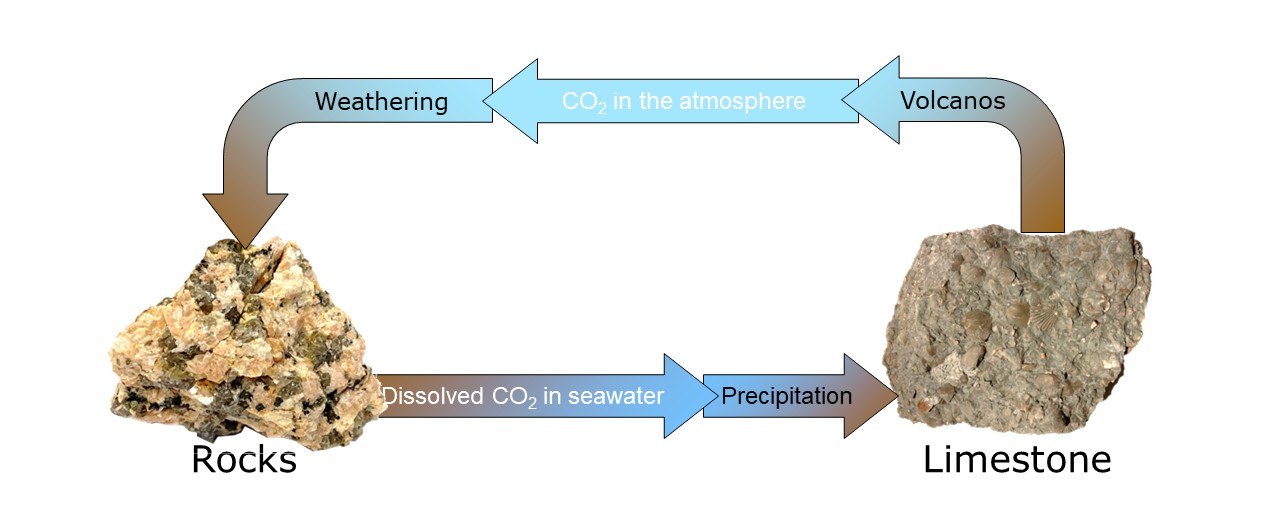
The slow carbon cycle works because carbon dioxide is taken from the atmosphere (by rock weathering) at the same speed as it is given back to the atmosphere (by volcanic eruptions).
|
If (and only if) you enjoy chemistry, we can dig even deeper … Rock weathering works like this:
Bicarbonate ions (HCO3-) are carbon dioxide dissolved in water. Because bicarbonate ions are negatively charged, they “pair up” with potassium ions (K+), which are positively charged. These are “left over” when rocks weather to clay, because rocks contain potassium, but clay doesn’t. |
Climate warming is happening because we are perturbing the fast and slow carbon cycles.
We perturb the fast carbon cycle when we change how the land is used. For example, when we cut down trees faster than we plant new ones, less carbon dioxide is taken from the atmosphere by trees photosynthesising at the same time as more carbon dioxide is given back to the atmosphere by trees decaying. Overall, by changing how the land is used, we add carbon dioxide to the atmosphere, which causes climate warming.
For this reason, perturbing the fast carbon cycle is a bad idea.
We perturb the slow carbon cycle when we burn fossil fuels and make cement. This is because we add carbon dioxide to the atmosphere faster than it can be taken from the atmosphere by rock weathering. Again, we add carbon dioxide to the atmosphere, which causes climate warming.
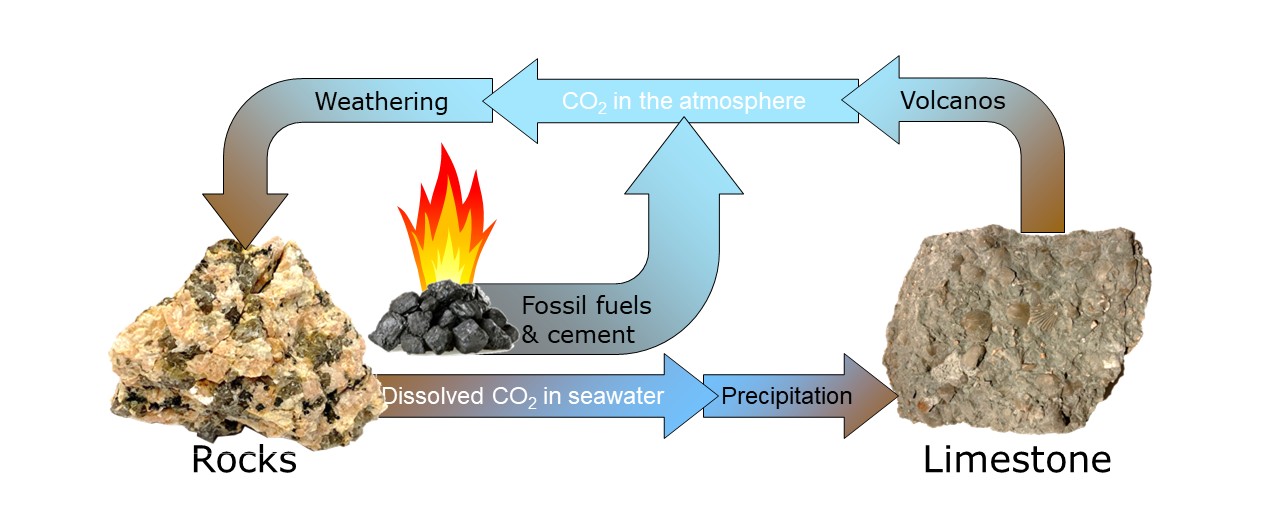
Perturbing the slow carbon cycle is an even worse idea than perturbing the slow carbon cycle.
This is because it is slow.
If we perturb the fast carbon cycle by, for example, cutting down trees, we will need to wait for a few decades for new trees to grow and remove the carbon dioxide we added to the atmosphere by cutting them down.
If we perturb the slow carbon cycle, we will need to wait for **a few hundred thousand years **for rock weathering to remove the carbon dioxide we added to the atmosphere by burning fossil fuels and making cement. This is because rock weathering is (very) slow.
A question I am also asked is why can’t the fast carbon cycle also remove all of the carbon dioxide we added to the atmosphere by burning fossil fuels and making cement?
The answer is that it doesn’t have the capacity.
The fast carbon cycle can (and does) remove some of the carbon dioxide we added to the atmosphere by burning fossil fuels and making cement as well as carbon dioxide we added to the atmosphere by changing how the land is used. This is called “greening”. Of the 40 billion tons of carbon dioxide we add to the atmosphere by burning fossil fuels, making cement and changing how the land is used, 31% is taken from the atmosphere by the fast carbon cycle working harder. The oceans help too, removing a further 23%. But that’s it. That’s the fast carbon cycle (and the oceans) at full capacity. The rest of the carbon dioxide we add to the atmosphere (46%) remains in the atmosphere, waiting for rock weathering to remove it (and try watching rock weathering – it makes watching paint dry cause for excitement).
But there is a solution.
If we stop adding carbon dioxide to the atmosphere (by burning fossil fuels, making cement and changing how the land is used), we will give the fast carbon cycle (and the oceans) a chance to “catch up” and remove even more carbon dioxide from the atmosphere.
It would still take a long time, but the atmosphere would recover.
